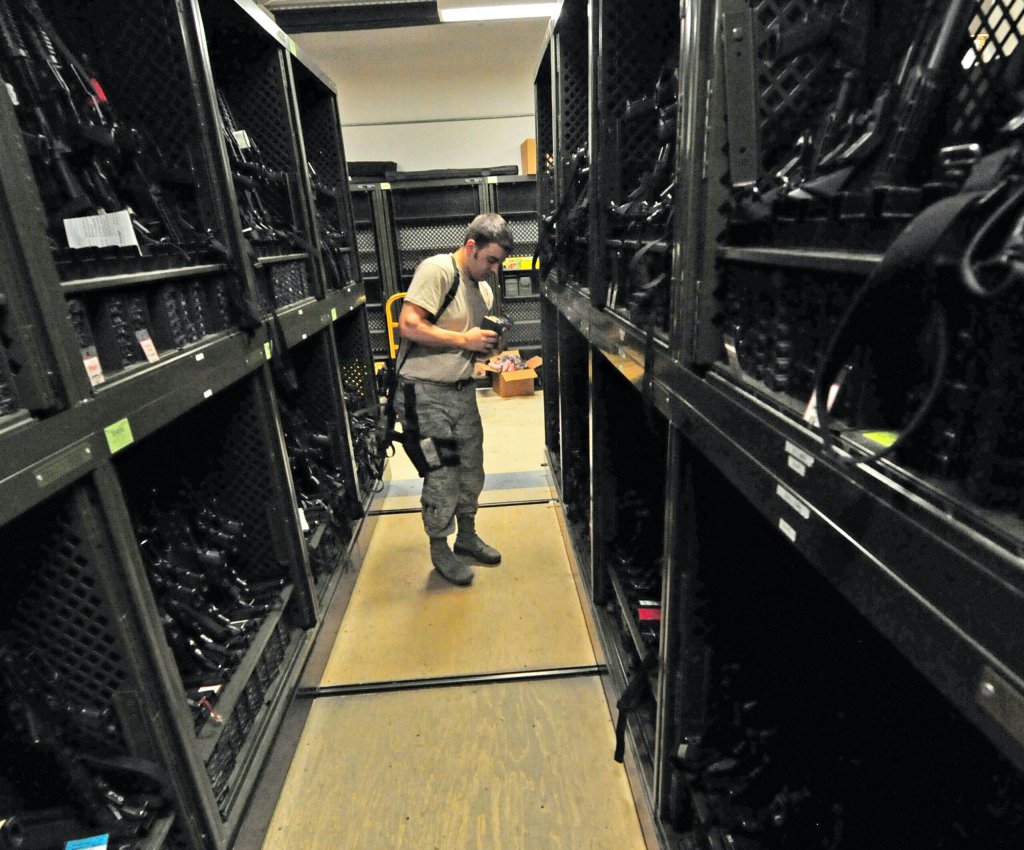

Infantrymen love getting all kinds of cool sh*t to work and train with, that’s no secret. However, some of the gear they’re issued is super freakin’ expensive, and the government likes to keep an extra-close eye on it by assigning serialized gear.
Everything, from your main weapon system to your sharp bayonet, is serialized with an engraved or handwritten number, making it individually identifiable.
Although it’s cool to mount your night vision goggles to your kevlar for a night mission, having serialized gear comes with its own set of drawbacks.
1. It’s never as clean as when you checked it in
Serialized gear isn’t kept in service members’ living spaces for a good reason: we’d play with it all the time. Instead, it’s housed in the dusty and dirty armory. That said, rarely is the serialized gear as clean as you’d like it to be with all the lubricant and filthy rags also stored there.
Plus, the armorer’s hands are usually pretty filthy when they’re conducting your check-in and check-out.
2. You might have to pay for serialized gear
Sometimes, serialized gear gets damaged or stolen — it happens more than you think. The major problem for you is that your command has to free you from paying for that broken or damaged gear out-of-pocket.
Serialized equipment is usually more expensive than the rest of stuff and, the reality is, some service members get stuck with the bill of replacing the items.
So, that sucks.
3. All the fun stuff requires batteries
NVGs and PEQ-16s run on battery power in order to function. These well-constructed light technologies work together as some of the lasers of the PEQ-16 can only be seen by using specific NVGs.
However, once the batteries die, the fun dies with it.

4. The serialized gear seems more valuable to the government than the troop carrying it.
Unfortunately, troops occasionally get hit while engaging the enemy. Since 99.9% of us carry a weapon — which is also serialized — if some of that gear goes missing after the troop is removed from the area, the rest of the squad must recover the equipment before going to the base. Sometimes, a recovery mission is ordered to search for left gear if need be.
You wouldn’t want the bad guys to get a free pair of night vision goggles.
5. You can get NJP’d for breaking or losing something
Destruction of Government Property is a real offense according to your staff NCOs, especially if you’re talking about serialized gear. Getting a tattoo is considered the same offense, but no one ever got charged with getting an Eagle, Globe, and Anchor inked on their arm.
You can break one of the springs in your magazine, but don’t you dare drop your serialized bayonet in a canal in Afghanistan and watch the current take it away. You could get in a lot of trouble.

